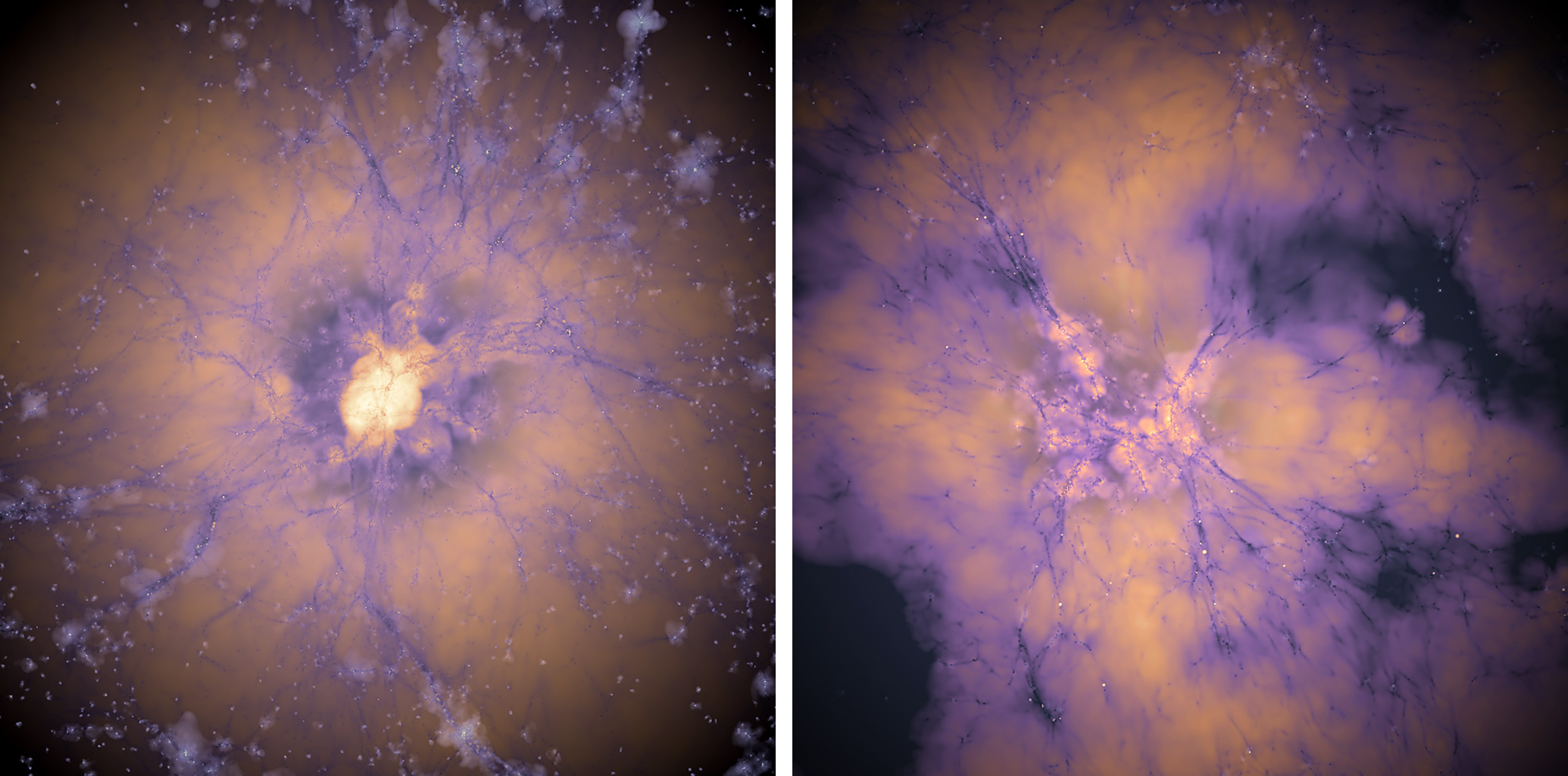A groundbreaking study by physicists at MIT proposes that the enigmatic concept of early dark energy may hold the key to resolving two significant mysteries in cosmology, shedding light on the evolution of the early universe.
The first mystery is the “Hubble tension,” which highlights discrepancies in the measurements regarding the rate at which the universe is expanding. The second mystery stems from the unexpected discovery of numerous bright galaxies present at a time when theoretical models suggest the early universe was far less populated.
The MIT team posits that the resolution to both of these puzzles could lie in an elusive component known as early dark energy. Just as current dark energy is believed to be responsible for the universe’s ongoing expansion, early dark energy is theorized to have played a fleeting yet crucial role during the universe’s infancy, likely influencing its expansion before vanishing.
Some scientists previously suggested that early dark energy might bridge the gap in the Hubble tension by accelerating the universe’s early expansion, potentially reconciling the disparate measurements.
In this new research, published today in the Monthly Notices of the Royal Astronomical Society, the MIT researchers found that early dark energy could also elucidate the surprising abundance of luminous galaxies observed in the early universe. They modeled galaxy formation during the universe’s initial few hundred million years and discovered that incorporating an early dark energy component resulted in a galaxy population that aligned more closely with astronomers’ findings.
“You have these two pressing puzzles demanding answers,” explains study co-author Rohan Naidu, a postdoctoral researcher at MIT’s Kavli Institute for Astrophysics and Space Research. “We’ve uncovered that early dark energy provides a neat and simple solution to some of the most challenging questions in cosmology.”
The study’s authors include lead author Xuejian (Jacob) Shen, MIT professor of physics Mark Vogelsberger, Michael Boylan-Kolchin from the University of Texas at Austin, and Sandro Tacchella from the University of Cambridge.
Galactic Surprises
Traditionally, cosmological and galaxy formation theories suggest that the universe should have taken considerable time to form its first galaxies. In theory, it would take billions of years for primordial gas to evolve into galaxies comparable in size and luminosity to the Milky Way.
However, in 2023, the James Webb Space Telescope (JWST) made a stunning revelation: it detected a surprising number of bright galaxies, comparable to the Milky Way, within the universe’s first 500 million years, a mere 3 percent of the cosmos’ current age.
“The bright galaxies observed by JWST were akin to spotting clusters of lights around major cities, while theoretical predictions suggested something akin to the dim lighting of rural areas,” remarks Shen. “Such clustering of light at such an early stage is unexpected.”
For astronomers, these findings imply a significant gap in our understanding of cosmology—either the underlying physics is flawed, or there is an unaccounted-for component within the early universe. The MIT team leaned towards the latter hypothesis, considering early dark energy as a potential missing ingredient.
Early dark energy is theorized to act as an antigravitational force during the universe’s nascent phase. This force could counterbalance gravity’s inward pull, thereby accelerating the universe’s initial expansion and resolving the Hubble tension discrepancies.
Understanding Galaxy Formation
The MIT researchers further investigated if early dark energy could clarify the unexpected discovery of large, bright galaxies identified by JWST. By studying how early dark energy may influence the primordial structure of the universe that gave rise to the first galaxies, they concentrated on the formation of dark matter halos—regions where gravity is concentrated, leading to matter accumulation.
“We view dark matter halos as the invisible framework of the universe,” Shen elaborates. “Dark matter structures emerge first, serving as the foundation for galaxy formation.”
The team developed a framework for early galaxy formation to model the anticipated number, size, and luminosity of galaxies birthed in the early universe, based on certain “cosmological parameters”—essential mathematical elements that characterize the universe’s evolution.
Among these parameters is the Hubble constant, which indicates the universe’s rate of expansion, alongside others detailing density fluctuations in the primordial epoch following the Big Bang from which dark matter halos emerged.
The researchers theorized that if early dark energy alters the universe’s initial expansion rate to resolve the Hubble tension, it could also influence the balance of cosmological parameters, enhancing the early galaxy count. Testing this hypothesis, they integrated their early dark energy model into an empirical galaxy formation framework to observe the evolution and emergence of the universe’s earliest dark matter structures.
“Our findings demonstrate that early universe’s structural backbone changes subtly, resulting in increased amplitude fluctuations, bigger halos, and brighter galaxies appearing sooner than traditional models predict,” Naidu notes. “This means that conditions in the early universe were denser and more clustered.”
Marc Kamionkowski, a theoretical physics professor at Johns Hopkins University, who was not involved in the study, asserts, “While I wouldn’t have assumed early dark energy had any connection to the wealth of bright galaxies found by JWST, it’s fascinating to see how these findings push cosmological parameters in a direction that could augment early galaxy abundance.”
“We’ve demonstrated that early dark energy holds potential as a comprehensive solution to two of cosmology’s major challenges. If JWST’s observations continue to substantiate our theory, we might have evidence for its existence,” concludes Vogelsberger. “In the future, we can integrate this understanding into expansive cosmological simulations to refine our predictions.”
This research received partial funding from NASA and the National Science Foundation.
Photo credit & article inspired by: Massachusetts Institute of Technology


